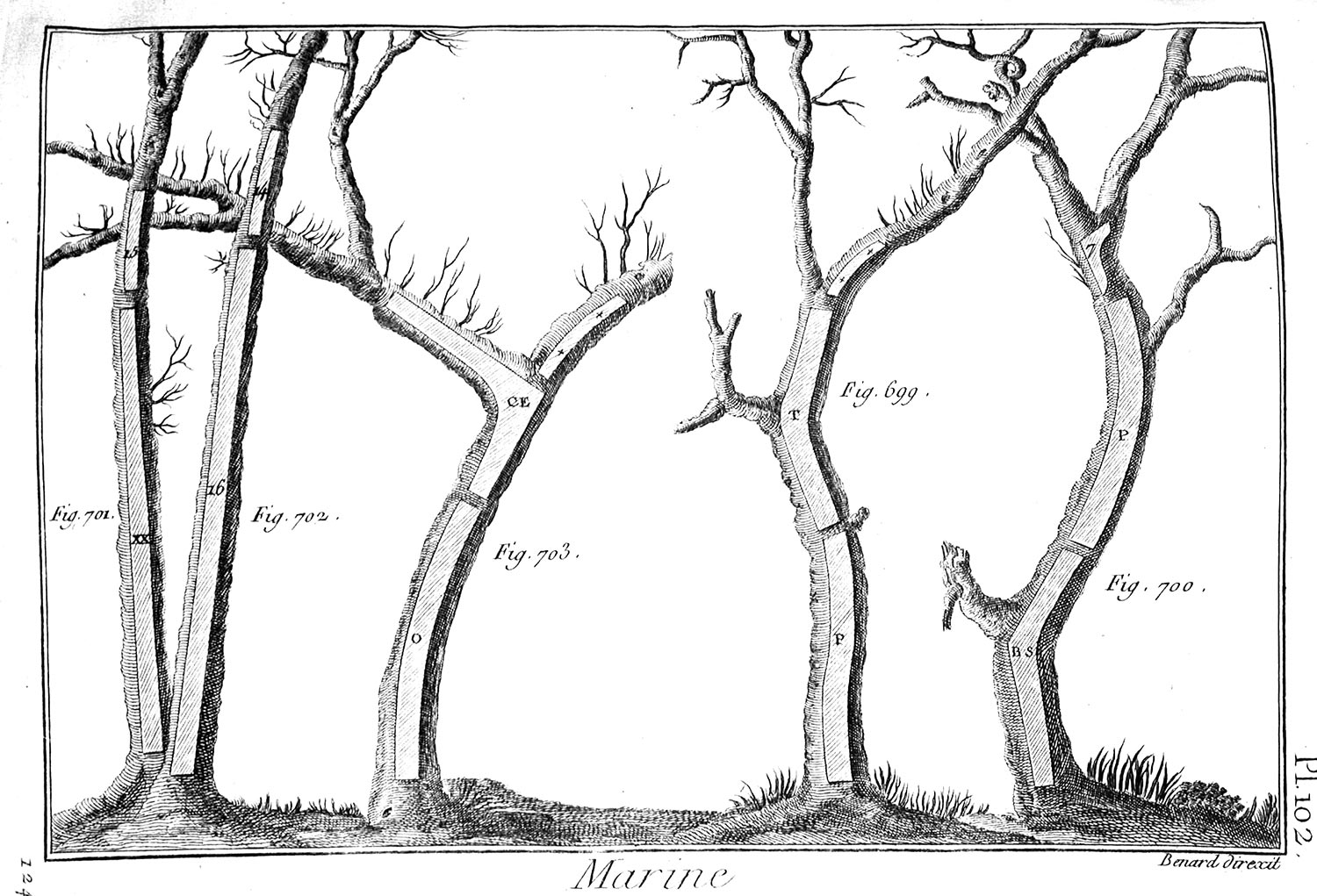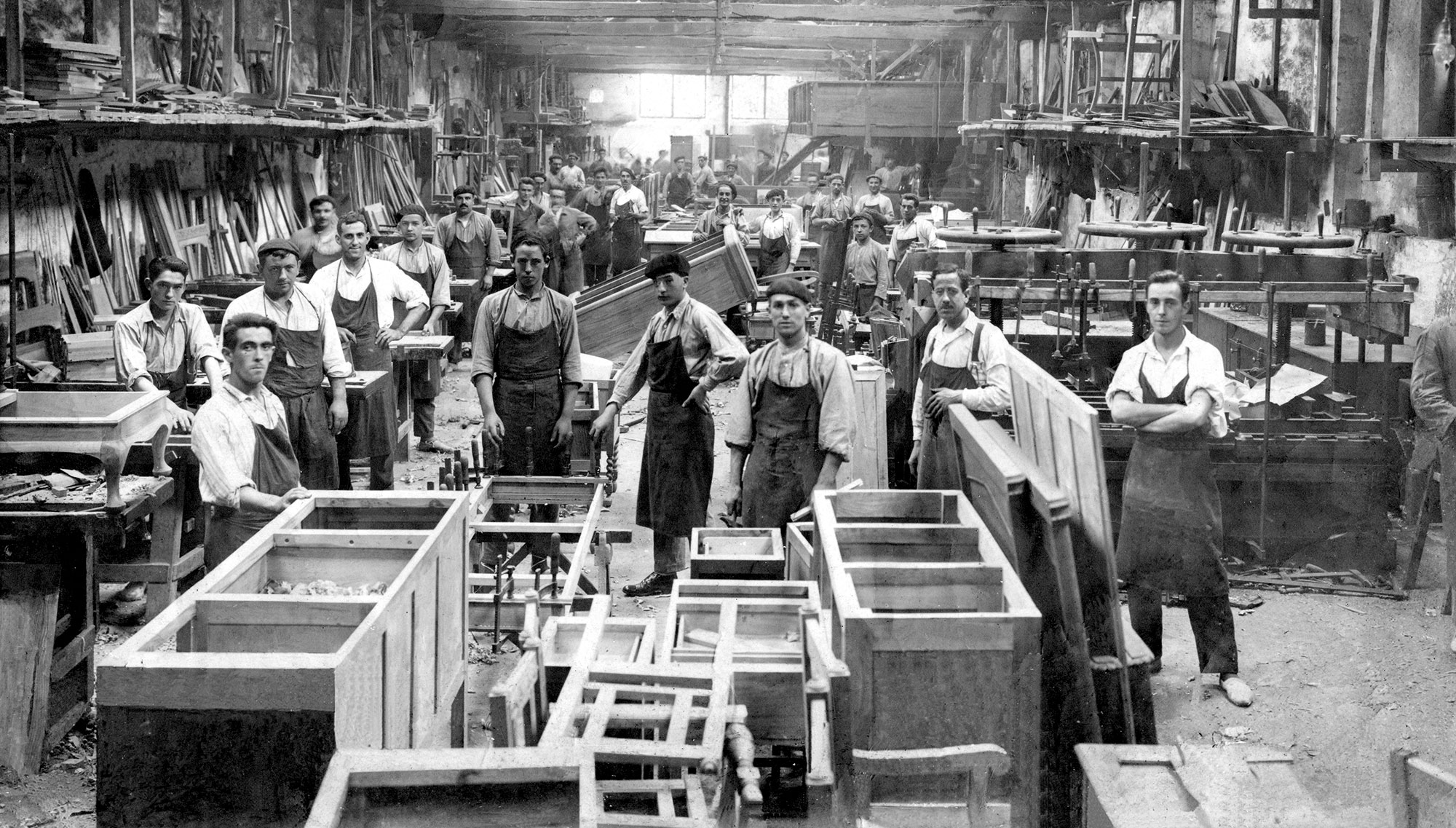A tradition of Ships
and Furniture
PHOTO:
(Right) Pollarding was a forestry technique used in the shipping industry to alter the growth of trees in order to get the most out of the wood.
In 1947, a local from Zarautz, a small coastal town in the Basque Country, opened his own carpentry workshop. His name was Jesús Aldabaldetrecu, he was 36 years old and had been working in the field since he was a boy. Jesús was just another link to a woodworking tradition which dated back more than five hundred years in this neck of the woods in the province of Gipuzkoa. While most of the coastal town of the XVI century were busy fishing at sea, the people of Zarautz were becoming specialists in the construction of small fishing boats and traineras or rowing boats – speedy long boats which were fundamental in whale hunting. The town achieved worldwide fame for its craftsmanship. The profound economic transformations occurring in Europe in the mid-XIX century brought with them a decline in traditional riverside shipyards. Crisis loomed on the horizon.
A door which had been open for centuries started to close, but various windows were simultaneously flung open. One of these windows was to tourism: at the same time as the industrial revolution, sea and beach tourism became popular on a section of the Cantabrian Sea. Zarautz, with its stretch of beach over 2 kilometers long, was one of the places that Royalty and the bourgeoisie of the time chose to partake in the famous activity known as baños de ola – jumping through the waves while holding onto a rope. The shipyards, where boats were built for centuries, became home to the creation of luxury furniture. Almost 70 years after being founded, the company Muebles Treku remains in the hands of Jesús Aldabaldetrecu’s descendants. Times and designs may have changed, but the handmade resilience and tradition still remain.


